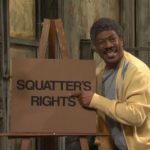The Photograph: What Healthy Black Love Looks Like In Public (And On Film)
Wiping away tears of joy, as Mae & Michael embraced passionately before entering a Kendrick Lamar performance in London, all I could think was how WE needed this. Black folk needed a visual reminder that our love is pure, that our life’s traumas can be handled and portrayed with care, that our resilience and coping aren’t solely demonstrated in career ambition and achievement, but in taking tangible actions to enhance our emotional intelligence while achieving. We were reminded that our sexual encounters can be simultaneously lust-filled and spiritually driven, both spearheaded by mutual desire, respect, and adoration. The Photograph gave black folk, and the genre of black love, what we’ve longed for 30+ years, nuanced healthy black love.
Respecting those who haven’t seen this gem of a film, I’ll refrain from doing a complete deep-dive in this op-ed. I’ll write with a similar love, care, and adoration the film’s creators offered us, with hopes you’d treat your spirit, and desire for healthy black love, to this experience.
Like many who’ll be seeing this film on Valentine’s Day, I entered the theater with skepticism, and low expectations, resulting from the continued lowering of the bar for black love stories that’s taken place over the last 30 years. Whether we’re talking black cult classics like LoveJones (1997) & Love & Basketball (2000), or most recently Queen & Slim (2019), our stories are often steeped in overt physical and emotional abuse. The love aspect of our films always appears to be radical and political in the ways Zora Neale Hurston describes in Their Eyes Are Watching God, where struggle and endurance are emphasized.
In our stories, unhealed trauma, unhealthy coping skills, and unrealistic expectations often overpower the love storyline. At its conclusion, we’re often left emotionally exhausted, with feelings of apathy and betrayal towards the creators, subconsciously questioning our communities’ ability to exhibit healthy love unapologetically. Coupling that with wondering whether Issa Rae (Mae) is capable of successfully shedding her comedian label to transition to a serious actor and if Lakeith Stanfield (Michael) can adequately portray black male vulnerability, to convey Michael’s truth, the worst was expected.
Giving thanks to the most high, I was wrong. What we received was nuanced, deeply melanin enriched, black love portrayed poetically by Lakeith and Issa. We received a plot, and storylines, that asked the audience to be attuned with their heart chakras as we watch the origination, and manifestation, of their on-screen romance. We were asked not merely to hear these characters, but to feel them, as they explored the depths of love with another while navigating the impact of absentee parents, continuous heartbreak, and career uncertainty.
Kismet, the only term with enough depth to describe the pair’s meeting, yet, they’d dance the dance many of us do when we’re hurt and unhealed from life’s experiences. Like Mae and Michael, and her parental predecessors, we often ‘second line’ dance around emotional barriers created by the past, which often leads to unhealthy pairings and us further retreating away from the one thing we desire most, love.
As they danced their dance throughout the film, neither Mae nor Michael ignore or hide their emotional scars. Instead, they leaned into them for understanding, while simultaneously being cognizant of how they were showing up for one another. Sure, neither of them were perfect at this, but who is? In their imperfections, we saw their humanity.
Lakeith gave viewers an educated, family-oriented, career-driven black man, who believed in the essence of love, yet it escaped his grasp. With an underlying fear that authentic companionship eluded him, he, like many men, retreated into his work, seeking a sense of wholeness from extrinsic motivators, to lessen the impact of those undesirable emotions, which come from unrequited/unfulfilled love.
Mae offered insight into the impact of generational trauma, caused by an open “mother wound,” where her mother’s secrets, shame, and guilt, impacted how she showed up or didn’t show up for Mae in the ways she needed. She was left to navigate the emotional vortex her mother created, piecing together her mother’s story to learn more about who she (Mae) was.
At every turn, Mae pushed back against the influence of her mother’s emotional unavailability, navigating that uncomfortable space to connect with Michael frequently. Michael pushed back against the notion that maybe he wasn’t suited for healthy, long-term companionship, despite his failed engagement that we learned about in the film. The film offered both characters grace and preserve their dignity, a stark contrast from so many of our love stories. If the movies of our past are any sign, historically, Mae would’ve been portrayed as a “bitter black woman” who needed “rescuing” and Michael, “an emotionally unavailable womanizer” until he’d be “saved” by Mae. We were all rescued from this tired black love trope.
In the end, we received neither a storybook ending, nor were we emotionally shattered. We saw neither ultimatums nor ulterior motives. What we viewed were two adults open to the possibilities of what love could look like when standing emotionally naked in front of their partner. We watched two people envision what their relationship could look like if both stayed present and committed to their healing. We saw two people working towards a collective life together. We imagined it too, some of us for the first time in 30 years, and we’re rooting for it, even after this The Photograph’s ending. We saw healthy, nuanced, black love, and we’re rooting for it hard.





